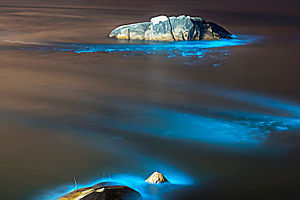If you're up for a challenge and a bit of excitement, then get ready for an adventure in the dark!
Starry sky photography, also known as astrophotography, is an incredibly rewarding yet challenging genre of photography. With the right equipment, planning, and a bit of patience, you can capture some of the most stunning and awe-inspiring images of the universe. In this article, we'll dive deeper into some tips and gear suggestions to help you capture the perfect starry sky photograph.
First things first, you need to gear up with the right equipment. A camera with manual controls is a must for astrophotography. This will allow you to adjust settings such as shutter speed, aperture, and ISO to capture the perfect shot. Full-frame DSLRs such as Canon EOS 5D Mark IV, and Nikon D850 or mirrorless cameras like Sony A7S III, Fujifilm X-T4 or Panasonic Lumix S5 are popular choices for astrophotography.
When it comes to lenses, a wide-angle lens with a low f-stop is essential. This will allow more light to enter the camera and capture the stars in all their glory. A lens with a focal length of 14-24mm and an aperture of f/2.8 or lower is ideal for astrophotography. Popular options include the Canon EF 16-35mm f/2.8L III USM or the Nikon AF-S NIKKOR 14-24mm f/2.8G ED.
To keep your camera steady for those long exposures, a sturdy tripod is essential. Look for one that can support the weight of your camera and lens and has a ball head for easy adjustments. A remote shutter release will help minimize camera shake when taking long exposures. And don't forget your trusty flashlight or headlamp to help you navigate through the darkness.
Now, let's talk about positioning. Finding the perfect location for your starry sky photo shoot is crucial. Look for a dark location away from light pollution to let those stars shine. The darker the location, the better the stars will appear in your photographs. Additionally, try to find some interesting foreground elements to add some depth to your photos.
Trees, mountains, and buildings can add interest to your composition and make your photos stand out.
To capture the Milky Way, which is most visible during the summer months, use it as a guide to frame your shot. Determine the direction of the Milky Way using a star chart app, such as Star Walk 2, SkyView, or Stellarium. These apps will also help you identify constellations and planets, giving you a better idea of what you can expect to see in your photographs.
When it comes to shooting, experiment with different angles and perspectives to find that perfect shot. Shooting from a low angle can create a dramatic effect, while a higher angle can capture a wider expanse of the sky. And don't be afraid to take multiple shots and play around with different settings to get the perfect image.
To avoid those pesky star trails, use the rule of 500. Divide 500 by the focal length of your lens to determine the maximum shutter speed before trails become noticeable. For example, with a 14mm lens, you should aim for a shutter speed of 35 seconds or less (500/14=35.7). And use a lens hood to prevent lens flare from nearby light sources.
One final tip to keep in mind is to dress appropriately for the weather. You'll likely be shooting during the nighttime when temperatures can drop, so make sure to wear warm clothes and bring a blanket or two to keep you cozy.
Starry sky photography is an incredible way to connect with the universe and appreciate its beauty. So grab your gear, find a dark location, and get ready to capture some truly mesmerizing images. Who knows, maybe you'll even capture a shooting star or two!


